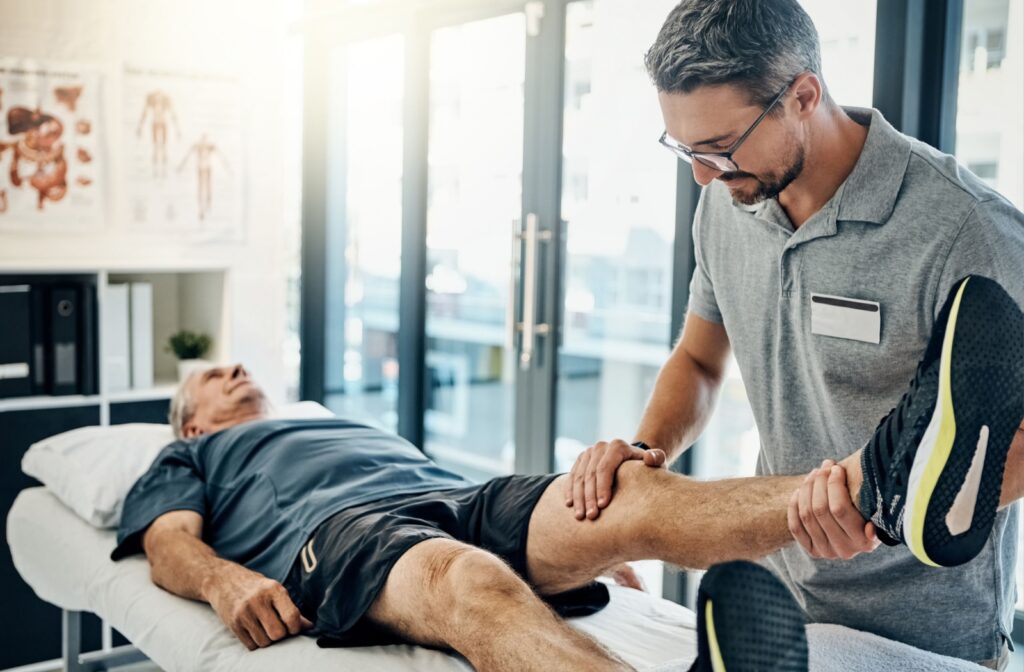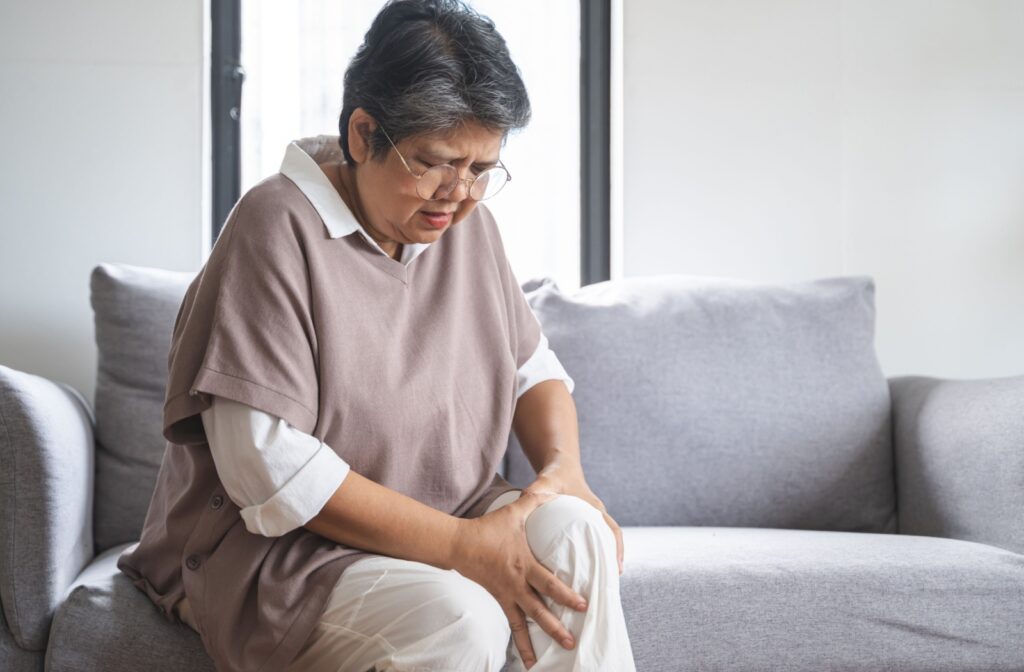Leg muscle weakness is a common concern for many older adults and can affect independence, confidence, and day-to-day mobility. As we age, it’s normal to experience changes in muscle strength, but noticeable or sudden weakness in the legs may signal an underlying issue that requires attention.
Leg muscle weakness in older adults is often linked to age-related muscle loss, inactivity, or underlying health conditions. Identifying the cause is important for improving mobility and reducing fall risk. Many factors can contribute, from circulation problems to nutritional deficiencies, and each requires a tailored approach.
Whether you’re an older adult or a caregiver, knowing what to watch for is the first step toward maintaining strength, safety, and quality of life.
Why Leg Muscle Weakness Happens
Leg muscle weakness in older adults isn’t always just a byproduct of aging. While age-related processes do play a role, there are often underlying causes that can be addressed. Below are the most common contributors to this condition, along with how they may be managed or prevented.
Sarcopenia (Age-Related Muscle Loss)
Sarcopenia refers to the gradual loss of muscle mass as we age. Starting as early as your mid-30s, muscle strength begins to decline by about 1% per year, accelerating after the age of 65. This muscle mass reduction makes activities like walking, climbing stairs, and even standing more difficult.
What can help:
- Strength training: Incorporating resistance exercises at least twice a week can help rebuild and maintain muscle strength.
- Adequate protein intake: Nutritional changes, such as consuming a protein-rich diet, can slow down muscle loss.
Chronic Conditions
Chronic diseases like diabetes, arthritis, and cardiovascular issues can dramatically impact the muscles in the legs. Neuropathy (nerve damage), for instance, is common in people with diabetes and can lead to muscle deterioration. Similarly, joint pain from arthritis may discourage physical activity, further contributing to muscle weakness.
What can help:
- Care plans: At assisted living communities, personalized care plans account for residents’ medical conditions, ensuring proper movement and treatment routines.
- Physical therapy: Regular sessions with a professional therapist can improve joint mobility and muscle strength.
Vitamin D & Calcium Deficiency
Deficiencies of nutrients like vitamin D and calcium often lead to weak bones and muscles. Vitamin D plays an important role in muscle function, while calcium is essential for bone strength. Deficiency in these nutrients can also increase the risk of falls and fractures.
What can help:
- Daily supplements: Consider including a vitamin D or calcium supplement in your diet, as recommended by a healthcare provider.
- Exposure to sunlight: Just 15 minutes of sun exposure daily can naturally boost vitamin D levels.
Sedentary Lifestyle
One contributor to muscle weakness is physical inactivity. The less the leg muscles are used, the weaker they become, forming a vicious cycle of immobility. Prolonged sitting or lack of movement from injuries and bed rest can lead to rapid muscle atrophy.
What can help:
- Group exercise programs: Group exercises provide motivation and camaraderie for older adults to stay active.
- Daily movement: Simple things like short walks and light stretching can make a big difference over time.
Neurological Disorders
Conditions such as Parkinson’s disease, multiple sclerosis, or even certain types of strokes can limit the brain’s ability to send signals to the muscles, resulting in reduced strength or control.
What can help:
- Specialized care: Memory care communities like Parsons House Preston Hollow provide the expertise needed to address neurological conditions in a supportive environment.
- Assistive technology: Devices such as walkers, braces, or motor aids can help improve mobility for individuals with neurological impairments.

Dehydration
It’s easy to underestimate the importance of hydration for muscle health. Dehydrated muscles are less efficient, which may lead to cramping, fatigue, or weakness.
What can help:
- Daily hydration goals: Aim for at least 8–10 glasses of water per day, depending on individual circumstances and health conditions.
- Monitor fluid intake: Caregivers at assisted living communities can ensure residents remain well-hydrated.
What Sets Our Community Apart?
At Parsons House Preston Hollow, we understand that addressing leg muscle weakness involves more than just treatment, but a holistic approach to care. That’s why we offer:
- Customizable lifestyle options: Whether it’s assisted living, independent living, or memory care, our residents receive thoughtfully tailored care plans to address their specific needs.
- Physical wellness programs: From group exercise classes to walking trails, we encourage physical activity that strengthens muscles and improves mobility.
- Expert staff support: Our caring and qualified staff are trained in senior health and wellness, helping every resident receive top-tier care.
- Educational resources: We provide family members and caregivers access to educational tools, helping them play an active role in a loved one’s success.
These supportive services are designed to empower our residents, promote safer movement, and help every person maintain their independence for as long as possible.
Start Living Healthier Today
Understanding the causes of leg muscle weakness is the first step to addressing it effectively. While age-related changes are inevitable, the right combination of care, nutrition, and activity can make a world of difference in promoting stronger, healthier legs. Are you or your loved one looking for a supportive environment where mobility and independence are celebrated? Contact Parsons House Preston Hollow today to learn more about our services or schedule a tour to visit us in beautiful North Dallas.


